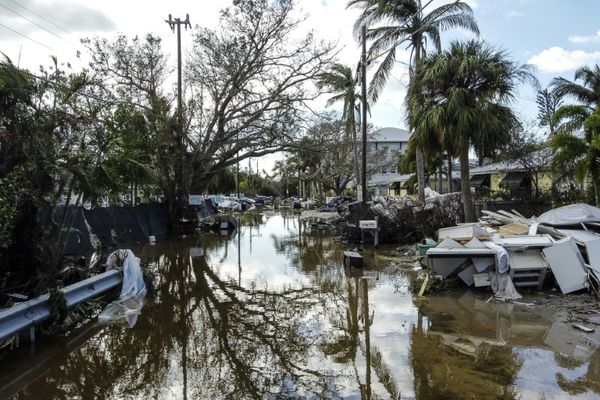ORLANDO, Fla. — Tropical Storm Julia is expected to become a hurricane later Saturday, according to the National Hurricane Center.
As of 5 p.m., the system was located about 55 miles south of Isla De Providencia, Colombia, with maximum sustained winds of 70 mph moving west at 17 mph. Julia’s tropical-storm-force winds have a reach of 80 miles. It is not expected to impact Florida.
Hurricane conditions are expected on the coast of Nicaragua overnight.
Hurricane warnings are in effect for San Andres, Providencia and the Santa Catalina Islands in Colombia, and in Nicaragua from Laguna de Perlas to Puerto Cabezas. A hurricane watch and tropical storm warning is in effect for Nicaragua south of Laguna de Perlas to Bluefields and north of Puerto Cabezas to the Honduras/Nicaragua border. A tropical storm watch is in effect for part of the Honduran coast.
Hurricane force winds and a dangerous storm surge is expected where the core of the system crosses the islands Saturday night. Life-threatening flash flooding and mud slides are expected across portions of Central America through the weekend. The system is expected to make landfall in Nicaragua on Sunday.
As Julia simmers in the warm Caribbean waters, it is expected to intensify into a hurricane Saturday evening, making it possibly the fifth hurricane of the year. Models are in agreement showing Julia growing to a maximum sustained wind strength of 85 mph before making landfall potentially along San Andres, Nicaragua, by Sunday morning, the NHC said.
San Andres and Providencia could receive between 6 and 12 inches of rain, the NHC warned, and portions of Central America could receive 15 inches, producing life-threatening flash floods and mudslides through this weekend. Julia’s storm surge will likely raise water levels by as much as 2 to 4 feet above normal tide levels along the immediate coast in areas of onshore winds on San Andres, Providencia, and Santa Catalina Islands.
After landfall, the NHC is confident Julia and its remnants should turn northwest and remain over Central America and southern Mexico through Monday. After that, Julia should be no more.
So far, the 2022 hurricane season has produced nine named storms and one more tropical depression that spun up and fell apart while Ian was striking Florida. The NHC also tracked one other potential cyclone that never grew into a depression, so that is why the most recent tropical depression is named TD 12.
Initially, the season was off to a slow start with a quiet July and August, but the season has picked up the pace since Sept. 1 with the emergence of four hurricanes including Fiona and Ian in the last two weeks. The National Oceanic and Atmospheric Administration predicted the season to be an above-average year in storm production calling for 14-21 named storms. An average year has 14.
Hurricane season ends on Nov. 30.
———







